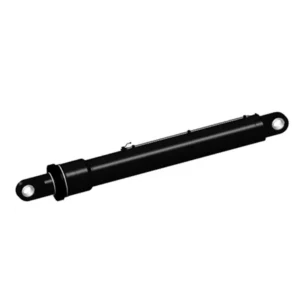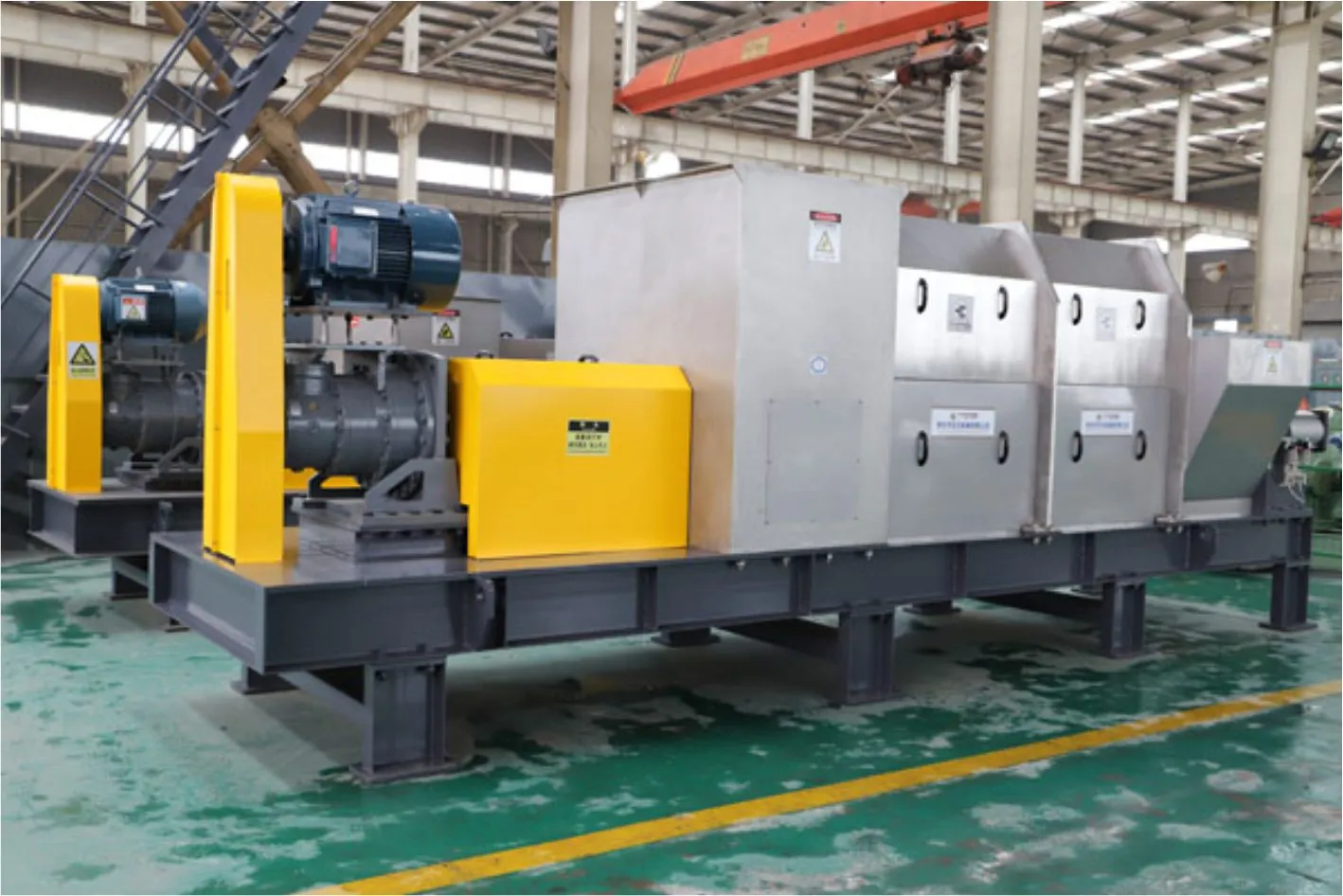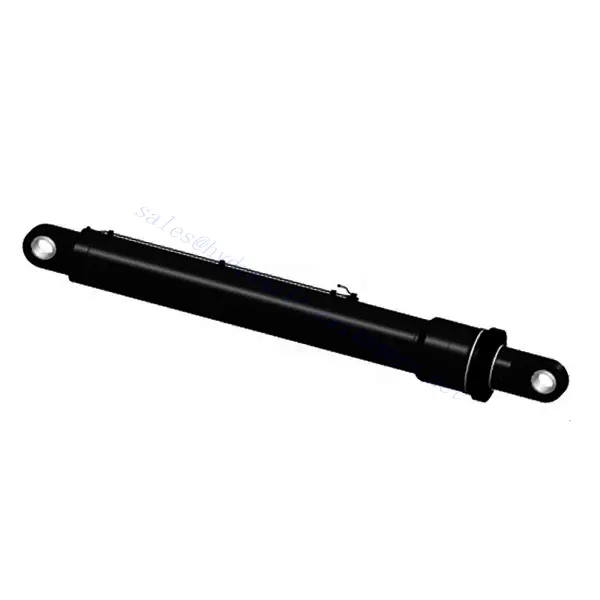Electric Furnace Tipping Cylinder
Як один з виробників, постачальників та експортерів механічних виробів, ми пропонуємо гідравлічні циліндри та багато інших продуктів.
Будь ласка, зв'яжіться з нами для уточнення деталей.
Пошта:sales@hydraulic-cylinders.net
Виробник, постачальник, експортер гідравлічних циліндрів.
Electric Furnace Tipping Cylinder

The electric furnace tipping cylinder is a cutting-edge product designed to optimize industrial furnace operations, specifically in the area of furnace tilting. This innovative cylinder provides a robust and efficient mechanism for controlled tilting of furnaces, facilitating smooth material handling and improving overall productivity.
The electric furnace tipping cylinder revolutionizes industrial furnace operations by providing precise control and enhanced efficiency in the tilting process. With its robust construction, precise tipping control, electric actuation system, and advanced safety features, this cylinder streamlines material handling, optimizes furnace performance and boosts productivity. By following the recommended usage methods and maintenance practices, you can ensure the optimal operation and longevity of the electric furnace tipping cylinder, contributing to seamless and efficient furnace operations in your industrial setting.
Electric Furnace Tipping Cylinder Key Characteristics:
- Robust Construction:
- The electric furnace tipping cylinder is built with high-quality materials, ensuring exceptional durability and longevity.
- Its sturdy construction enables it to withstand high temperatures, heavy loads, and demanding industrial environments without compromising performance.
- Precise Tipping Control:
- This cylinder offers precise and responsive control over the tilting process, allowing operators to achieve the desired angles accurately.
- The precise tipping control enhances operational efficiency, minimizes material spillage, and optimizes the flow of materials within the furnace.
- Electric Actuation:
- The electric furnace tipping cylinder operates through an electric actuation system, eliminating the need for manual adjustments.
- This electrically powered system provides convenience, speed, and precise control, streamlining the furnace tilting process and reducing human error.
- Safety Features:
- The cylinder is equipped with advanced safety features, such as overload protection and emergency stop mechanisms.
- These safety features ensure safe and reliable operation, preventing accidents and damage to equipment during the tilting process.
Electric Furnace Tipping Cylinder Parameter:
| Product Name | Electric Furnace Tipping Cylinder |
| Bore diameter: | 320mm |
| Rod diameter: | 300mm |
| Pressure: | 14MPa |
| Thrust force: | Maximum 989KN |
| Electric Furnace Tipping Cylinder Applications: | Electric Furnace |
(Bore diameter: 320mm/Rod diameter: 300/pressure14MPa)
Electric Furnace Cylinder Factory:

Usage Method Of Electric Furnace Tipping Cylinder:
- Installation:
- Begin by ensuring that the electric furnace tipping cylinder is securely and properly mounted on the furnace structure.
- Follow the manufacturer’s guidelines and specifications for correct positioning and attachment.
- Ensure that all connections, such as hydraulic hoses and electrical wiring, are properly secured and free from leaks or loose connections.
- Electrical Connection:
- Connect the electric furnace tipping cylinder to the electrical power supply, following the manufacturer’s instructions and electrical codes.
- Verify that all electrical connections are secure and insulated to prevent potential hazards or malfunctions.
- Tilting Process:
- Activate the electric furnace tipping cylinder using the control panel or switch designated for tilting operations.
- The cylinder will smoothly and precisely tilt the furnace to the desired angle, allowing for efficient material handling and processing.
- Monitor the tilting process closely and make any necessary adjustments to achieve the ideal angle for the specific application.
- Integration with Control Systems:
- The electric furnace tipping cylinder can seamlessly integrate into existing control systems.
- Consult with a qualified technician or the manufacturer’s guidelines to ensure proper integration and compatibility with your specific furnace setup.
How To Repair Hydraulic Cylinder?
Repairing a hydraulic cylinder requires a good understanding of hydraulic systems, proper tools, and adherence to safety guidelines. Here’s a general guide on how to repair a hydraulic cylinder:
- Safety First:
- Before starting any repair work, ensure that the hydraulic system is depressurized and the cylinder is safe.
- Use appropriate personal protective equipment (PPE) such as gloves and safety glasses to protect yourself from potential hazards.
- Identify the Problem:
- Determine the specific issue with the hydraulic cylinder. It could be a leak, damaged seals, bent rods, or other mechanical problems.
- Inspect the cylinder thoroughly, looking for damage, wear, or contamination.
- Gather the Necessary Tools and Parts:
- Collect the required tools and equipment for the repair, such as wrenches, pliers, seal kits, torque wrenches, and a hydraulic press.
- Ensure you have the necessary replacement parts, including seals, O-rings, and any other components that need replacing.
- Disassembly:
- Carefully disassemble the hydraulic cylinder, following the manufacturer’s guidelines if available.
- Remove the retaining hardware, such as bolts, pins, or clips, to separate the cylinder components.
- Take note of the order and orientation of the components as you disassemble to ensure correct reassembly.
- Inspection and Cleaning:
- Inspect all disassembled components for damage, wear, or signs of contamination.
- Clean the components thoroughly using an appropriate solvent to remove dirt, debris, and hydraulic fluid residue.
- Inspect the cylinder barrel, piston rod, seals, and other internal parts for any signs of scoring, pitting, or other damage.
- Seal Replacement:
- Replace any damaged or worn seals, O-rings, or gaskets with new ones from the seal kit.
- Remove the old seals carefully, ensuring that they do not scratch or damage the cylinder surfaces.
- Lubricate the new seals with hydraulic oil and install them in their proper positions according to the manufacturer’s specifications.
- Rod Straightening or Replacement:
- If the piston rod is bent or damaged, it may need to be straightened or replaced.
- Straighten a bent rod using a hydraulic press or seek professional assistance if the damage is severe.
- If replacement is necessary, carefully remove the old rod and install the new one, ensuring proper alignment and threading.
- Reassembly:
- Reassemble the hydraulic cylinder, following the reverse order of disassembly.
- Apply a thin film of hydraulic oil or grease to the internal components to ensure smooth operation and prevent damage during startup.
- Testing and Inspection:
- Once the hydraulic cylinder is reassembled, test its operation before reinstalling it.
- Connect the cylinder to the hydraulic system and slowly pressurize the system to check for any leaks, abnormal sounds, or irregular movements.
- Verify that the repaired cylinder operates smoothly and meets the desired performance standards.
Capability & Capacity Of Factory:
(1) Assembly
We have a first-class independent research and development assembly platform. The hydraulic cylinder production workshop has four semi-automatic lifting cylinder assembly lines and one automatic tilt cylinder assembly line, with a designed annual production capacity of 1 million pieces. The special cylinder workshop is equipped with various specifications of a semi-automatic cleaning assembly system with a designed annual production capacity of 200,000 and equipped with famous CNC machining equipment, a machining center, a high-precision cylinder processing special equipment, a robot welding machine, an automatic cleaning machine, automatic cylinder assembly machine, and automatic painting production line. Existing critical equipment of more than 300 sets (sets). The optimal allocation and efficient use of equipment resources ensure the accuracy requirements of products and meet the high-quality needs of products.


(2) Machining
The machining shop is equipped with a customized inclined rail turning center, machining center, high-speed honing machine, welding robot, and other related equipment, which can handle the processing of cylinder tubes with a maximum inner diameter of 400mm and a maximum length of 6 meters.

(3) Welding

(4) Painting & coating
With small and medium-sized cylinder automatic water-based paint coating lines, to achieve automatic robot loading and unloading and automatic spraying, the design capacity of 4000 pieces per shift;
We also have a semi-automatic paint production line for large cylinders powered by a power chain, with 60 cases per shift design capacity.


(5) Testing
We have first-class inspection facilities and test beds to ensure that the performance of the cylinder meets the requirements.

We are one of the best hydraulic cylinder manufacturers. We can offer comprehensive hydraulic cylinders. We also provide corresponding agricultural gearboxes. We have exported our products to clients worldwide and earned a good reputation because of our superior product quality and after-sales service. We welcome customers at home and abroad to contact us to negotiate business, exchange information, and cooperate with us!
Take a Tour of Our VR Factory:
Take a tour of our VR factory with the following
How Does Forklift Hydraulic Cylinder Work?
Hydraulic Cylinder Application:


